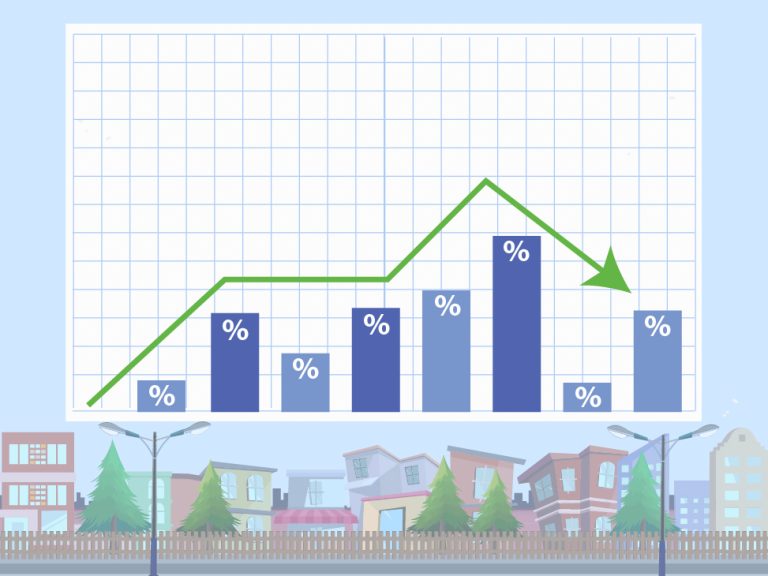Last Updated on 18th October 2024
Getting home loan is very BASIC now
Get a loan in under 5 mins

Last Updated on 18th October 2024
In the ever-evolving landscape of the housing market, one thing remains certain: there is nothing truly constant about fixed-interest rate home loans. While they might seem like a safe bet at first glance, a closer look reveals that these loans can present a mixed bag of advantages and disadvantages for borrowers. Let’s take a look at these.
Table of Contents
Despite their appeal, fixed rate home loans may not always be ideal. Here are some factors to consider that shed light on the potential downsides:
One of the most important things to keep in mind is that fixed-rate loans often come with higher interest rates compared to their floating-rate counterparts. In many cases, fixed rates can be as much as 75 basis points higher than the prevailing floating rates offered by lenders so it’s better advised to check all bank home loan interest rates before choosing any fixed-rate home loan.
Interest rates are subject to change, and the Reserve Bank of India might announce a home loan interest rate reduction after you’ve secured your home loan. However, due to the fixed nature of your interest rate, you won’t benefit from lower EMIs, even if the new rates are more favorable.
Most lending institutions, except a few banks, offer mixed-rate home loans. This means that the fixed rates chosen will be valid only for the initial few years of the loan. After this period, borrowers must repay the loan at the revised interest rates available in the market, which may or may not be in their favor.
Flexibility is a key consideration when assessing loan options. Floating-rate home loan borrowers enjoy the freedom to make prepayments without incurring any penalties. However, lenders often impose penalties on prepayments for fixed-rate home loans, particularly if it’s a balance transfer.
Suggested read: Pradhan Mantri awas yojana eligibility
Fixed-rate home loans are particularly suitable for individuals who foresee rising lending rates and are concerned about the prospect of paying higher interest in the future. These loans offer a hedge against such uncertainties, aligning well with conservative financial planning strategies.
Fixed-rate home loans have gained popularity in recent times, especially in the Indian market, where interest rates are currently low, hovering around 8.45 percent. Many borrowers are rushing to lock in these rates, and for good reason. Fixed interest rates offer a sense of stability and predictability during the initial years of a home loan, allowing borrowers to plan their finances more effectively. This stability makes it easier for them to budget for equated monthly installments (EMIs) and manage their repayment schedule.
A Premium for Stability
However, it’s important to note that this stability comes at a cost. Fixed interest rate home loans typically come with a premium attached, often one percent or more higher than the prevailing floating interest rates. Interestingly, these loans are often marketed more towards non-resident Indians (NRIs) rather than domestic customers in India, who are usually encouraged to opt for floating interest rate products.
Global Trends in Fixed-Rate Mortgages
Internationally, fixed-rate home loans are a popular choice during periods of low-interest rates. The primary advantage they offer is protection against potential future rate hikes, giving borrowers peace of mind as they can anticipate their future financial obligations with greater accuracy.
Suggested read: Top Housing Finance Companies in India
Conclusion
In an economy susceptible to rising interest rates, fixed-rate home loans may seem like a prudent choice for quick repayment. However, sudden decreases in interest rates can leave borrowers paying more than necessary, as their rates remain fixed, unlike their floating-rate counterparts.
While fixed-interest rate home loans can offer stability and protection against rising interest rates, they come with their fair share of trade-offs. Borrowers must carefully weigh the advantages and disadvantages before committing to these loans. Ultimately, the choice between fixed and floating interest rates should align with individual financial goals and risk tolerance. In the dynamic world of home finance, adaptability and foresight remain essential qualities for savvy borrowers.
The significant disadvantages of a fixed home loan interest rate include potentially higher initial rates and less flexibility.
Fixed home loan rates are not constant due to various economic factors and central bank policies.
An example of a fixed interest rate is a 30-year mortgage with an 8.55% annual rate.
A fixed home loan interest rate can be changed but with a lender and borrower agreement.
Fixed home loan interest rates are less risky in a rising rate environment and more difficult when interest rates fall.
Banks typically cannot raise a fixed interest rate for a home loan once the loan is established, unless specified conditions are met.